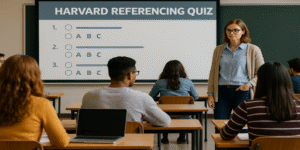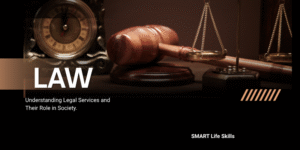In both academic and professional environments, reading skills are essential for processing, evaluating, and applying information effectively. Developing the ability to distinguish fact from opinion, identify the purpose of a text, apply techniques such as skimming and scanning, and produce summaries are crucial components of literacy and critical thinking (Ismail et al., 2025). This essay examines these key reading skills, their significance, and their application with relevant examples.
Fact versus Opinion
One of the most fundamental reading skills is distinguishing between facts and opinions. A fact is an objective statement that can be verified with evidence, such as “The capital of France is Paris.” In contrast, an opinion is subjective, reflecting beliefs or attitudes, for example, “Paris is the most beautiful city in the world.”
According to Cottrell (2019), the ability to differentiate fact from opinion enables students to critically evaluate arguments, especially in persuasive texts such as news articles or political speeches. Research by Hartig et al. (2023) indicates that students who lack this skill are more susceptible to misinformation.
For instance, in health communication, the statement “Smoking increases the risk of lung cancer” is a fact supported by medical evidence, whereas “E-cigarettes are a safe alternative” may be an opinion, depending on the evidence available. Developing this skill fosters critical literacy, essential for academic study and informed citizenship.
Types of Texts: Descriptive, Informative, Instructional, and Persuasive
Recognising the purpose and structure of a text is another vital reading skill. Texts can generally be categorised as descriptive, informative, instructional, or persuasive (Joshi, 2025).
- Descriptive texts provide vivid imagery or sensory detail. For example, travel writing that describes landscapes or literature that portrays characters relies heavily on adjectives and imagery.
- Informative texts aim to provide knowledge or explain concepts, such as encyclopaedia entries or scientific reports. These typically present facts, data, and objective explanations.
- Instructional texts give directions or explain how to perform tasks. Examples include recipes, manuals, or training guides. According to Roy (2010), such texts often use imperative verbs and sequential structures.
- Persuasive texts seek to influence the reader’s attitudes or actions. Advertising, opinion columns, and political speeches often use emotive language, rhetorical devices, and selective facts to appeal to the reader (Haloho, 2019).
Being able to identify the type of text helps readers adopt appropriate strategies. For instance, when engaging with a persuasive essay, a critical reader should look for unsupported claims, while reading an instructional manual requires attention to sequential details.
Skimming and Scanning
Skimming and scanning are efficient reading strategies that allow readers to quickly locate and process information.
- Skimming involves rapidly reading a text to grasp its general meaning. This technique is often used when surveying a research article to identify the main argument or conclusions (Fauzi, 2018).
- Scanning is the process of looking for specific information, such as dates, figures, or keywords. Students preparing for exams often use scanning to locate precise definitions or examples in their notes (Fatmawati, 2014).
Research indicates that both skimming and scanning improve reading speed without significantly reducing comprehension when used appropriately (Indah, 2018). For example, a law student might skim a legal judgement to understand the case outcome before scanning the document for specific legal principles.
Roy (2010) further highlights their importance in professional contexts, noting that business managers often scan documents for critical instructions while skimming executive summaries to save time.
Summarising
Summarising is the skill of condensing information while preserving key ideas and meaning. Unlike paraphrasing, which rewords content, summarising requires prioritising essential points and discarding less relevant details (Delgado-Osorio et al., 2023).
Effective summarising supports learning by reinforcing memory and demonstrating comprehension. According to Astika (2025), writing summaries requires students to interpret texts, evaluate their central message, and express ideas in their own words. This process aligns with Bloom’s taxonomy, which views synthesis and evaluation as higher-order thinking skills.
For instance, after reading a research article on climate change, a student’s summary might note the study’s methodology, main findings, and implications while omitting secondary details. Summarising is therefore crucial for academic writing, particularly in literature reviews and research reports.
Integration of Reading Skills
While each reading skill can be taught individually, they often work best when integrated. For example, when reading a persuasive article, students should:
- Skim the text to grasp the main argument.
- Identify whether statements are facts or opinions.
- Recognise the text as persuasive, prompting a critical stance.
- Scan for key statistics or claims supporting the argument.
- Summarise the article to consolidate understanding.
This holistic approach develops both efficiency and critical literacy, enabling readers to manage complex academic materials.
Reading is not a passive process but an active, purposeful skill that involves evaluating and interacting with texts. Distinguishing fact from opinion helps readers maintain objectivity, while recognising whether texts are descriptive, informative, instructional, or persuasive supports strategic reading. The use of skimming and scanning improves efficiency, and summarising consolidates comprehension. Together, these skills enhance academic performance and professional competence. As higher education and workplaces increasingly demand critical literacy, the mastery of these reading skills remains indispensable.
References
Astika, G. (2025) Mastering intensive reading: Skills for academic and critical understanding. London: Routledge.
Cottrell, S. (2019) The study skills handbook. 5th edn. London: Macmillan.
Delgado-Osorio, X., Koval, V. and Hartig, J. (2023) ‘Strategic processing of source text in reading-into-writing tasks: A comparison between summary and argumentative tasks’, Journal of English for Academic Purposes, 61, pp. 1–12.
Fauzi, I. (2018) ‘The effectiveness of skimming and scanning strategies in improving comprehension and reading speed rates for the students of English study program’, Paradigma: Jurnal Filsafat, Sains, Teknologi, 15(3), pp. 55–64.
Fatmawati, Y. (2014) ‘The impact of using skimming and scanning strategies of descriptive text towards students’ reading comprehension’, International Conference on Education and Language (ICEL), pp. 121–130.
Haloho, F. (2019) ‘The effect of skimming and scanning technique on students’ reading comprehension in narrative text’, Repository.uhn.ac.id, pp. 45–62.
Hartig, J., Delgado-Osorio, X. and Koval, V. (2023) ‘Strategic reading and distinguishing fact from opinion in academic texts’, Journal of English for Academic Purposes, 61, pp. 1–15.
Indah, C.H.R. (2018) ‘The effectiveness of scanning and skimming in improving reading comprehension skill of nursing students’, Paradigma: Jurnal Filsafat, Sains, Teknologi, 16(2), pp. 22–36.
Ismail, G., Surismiati, S., Budiyanto, D. and Jaya, A. (2025) Master reading: Approaches and techniques. Oxford: Oxford University Press.
Joshi, M. (2025) Foundations of reading, writing, and proving. Cambridge: Cambridge University Press.
Roy, D. (2010) ‘Reading strategies for procedural information in EFL business writing environment: An exploratory analysis’, 2010 IEEE International Professional Communication Conference, pp. 164–170.









